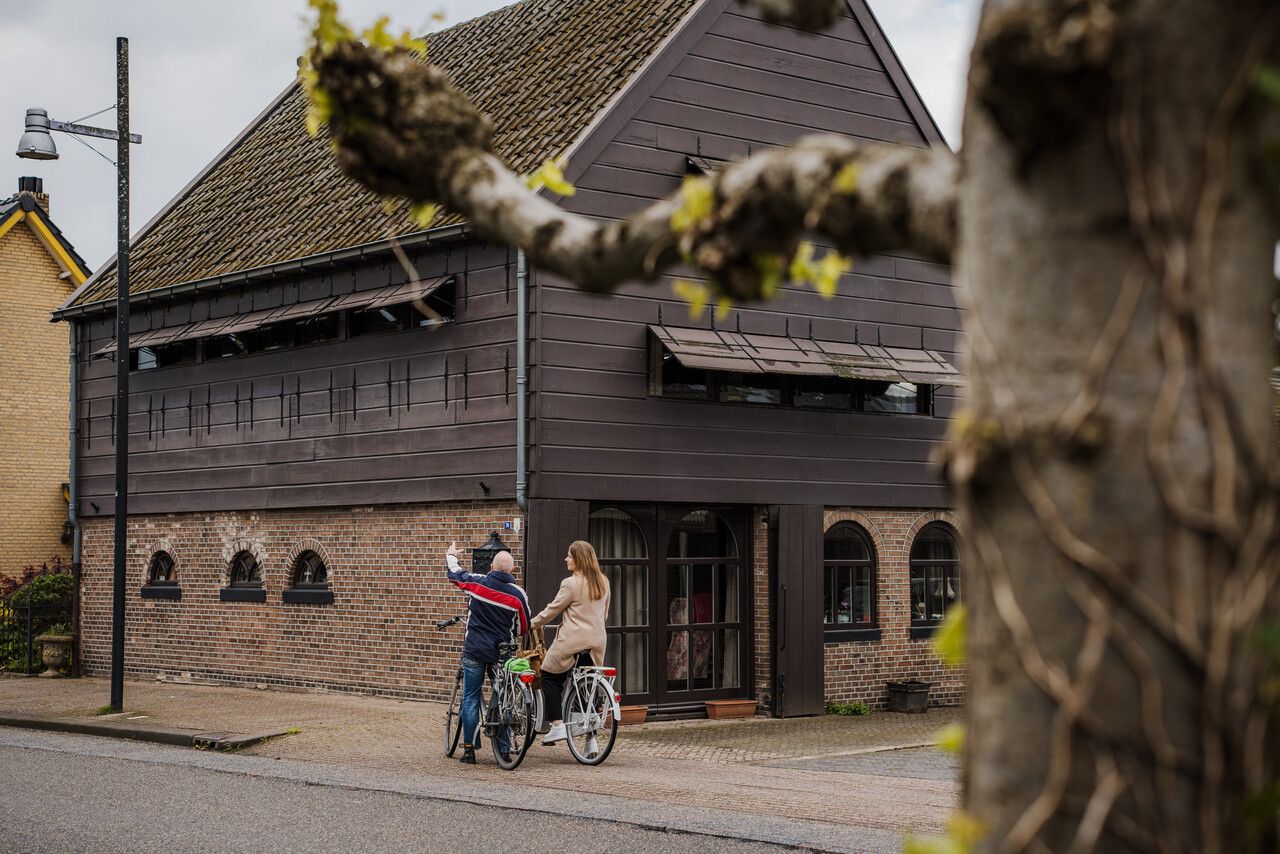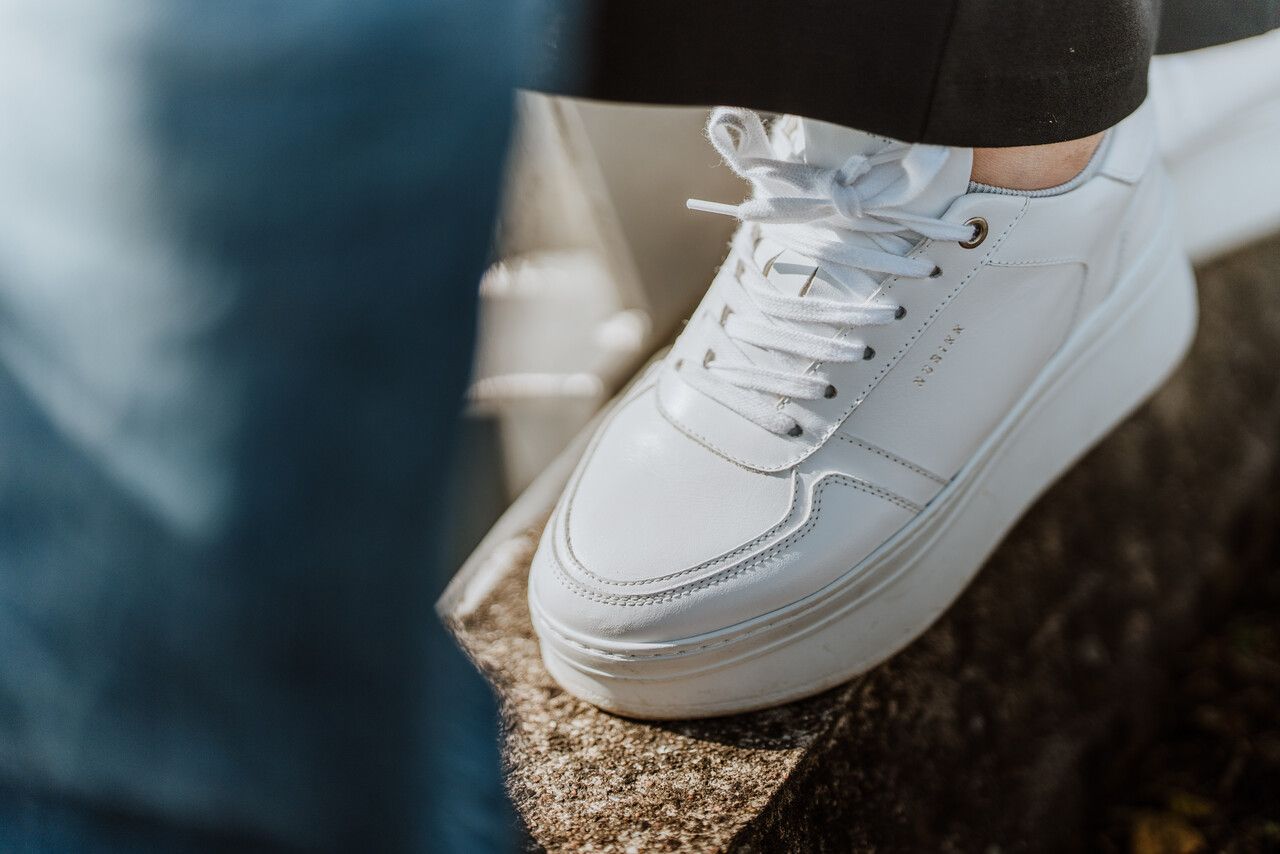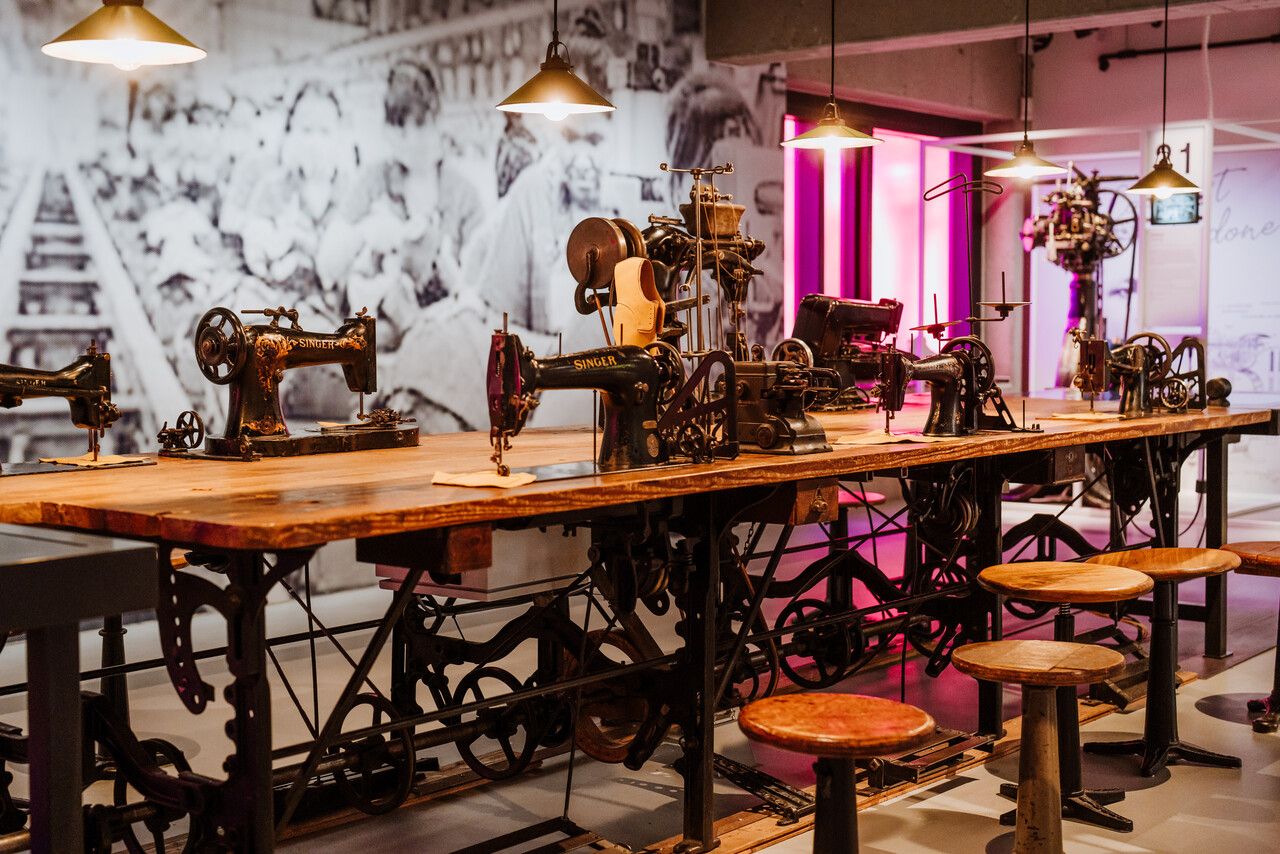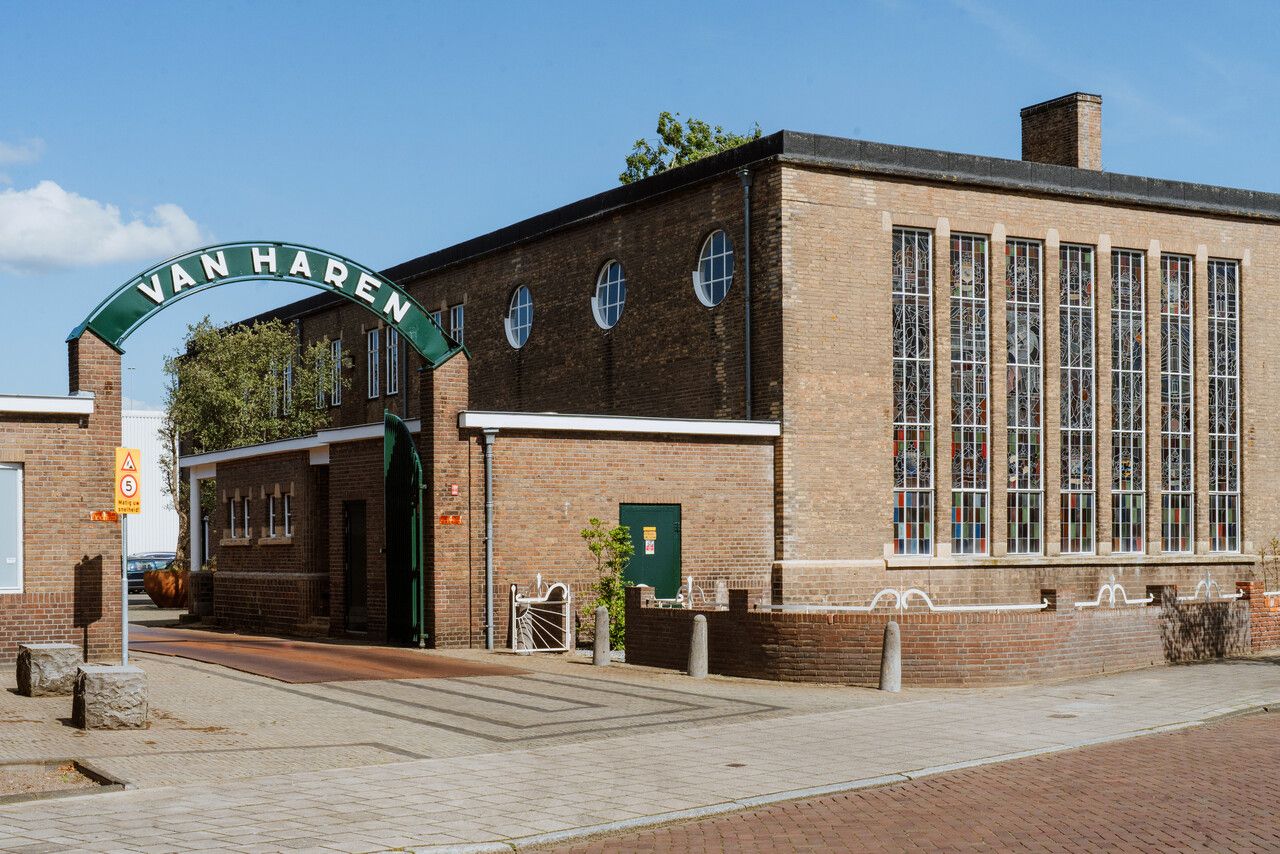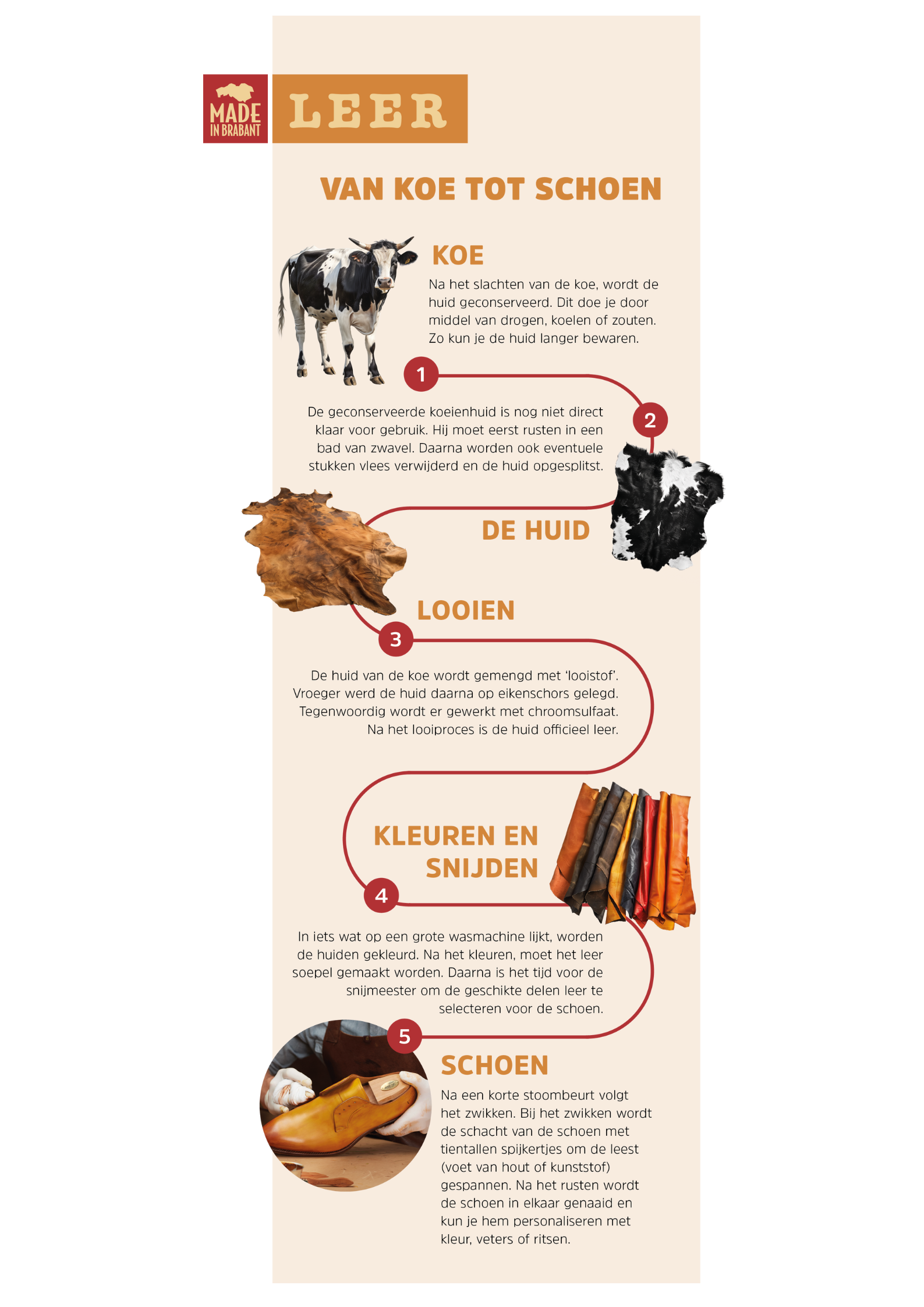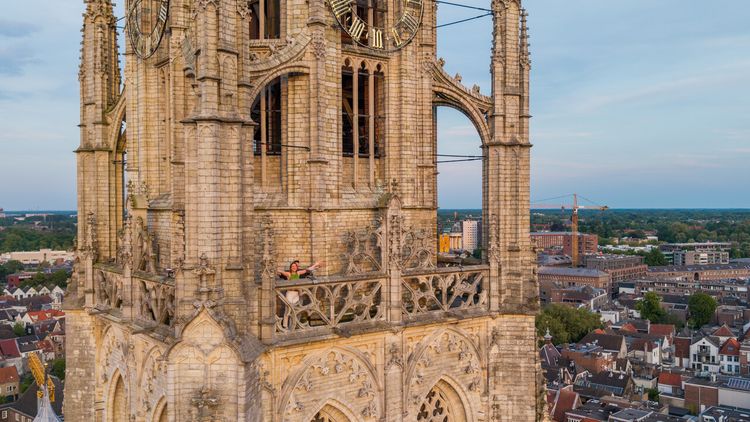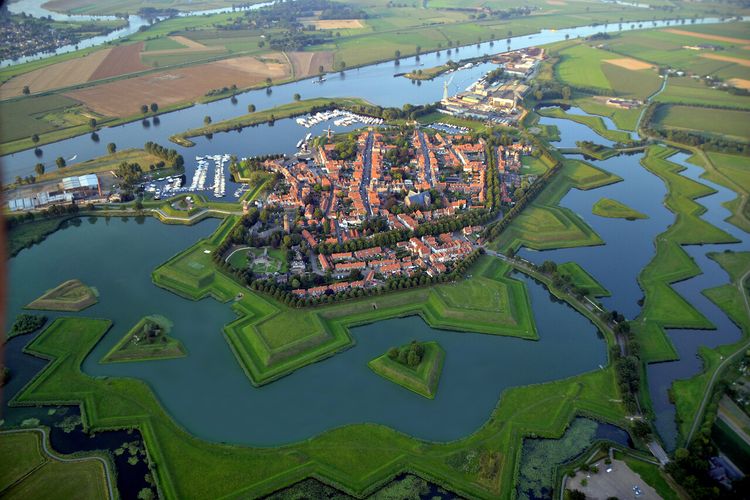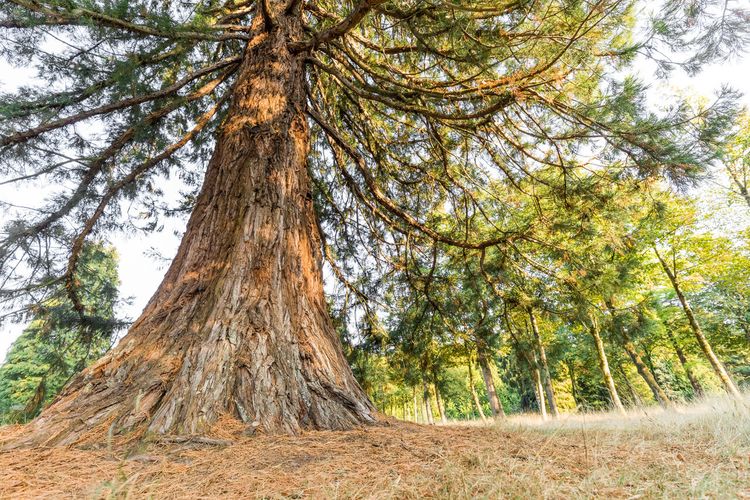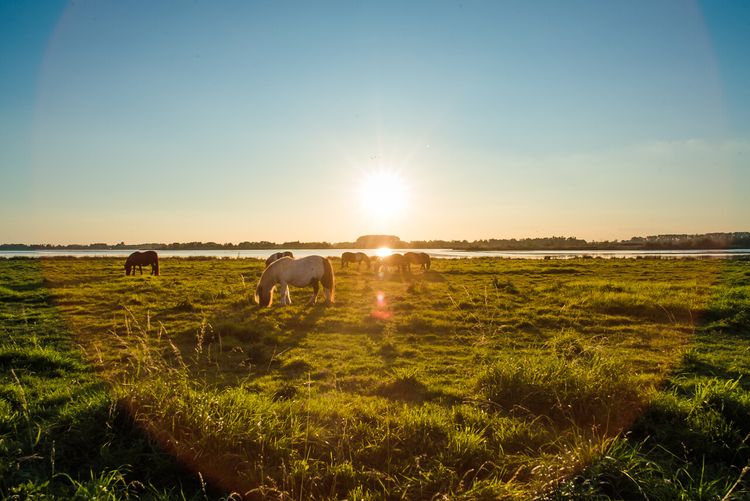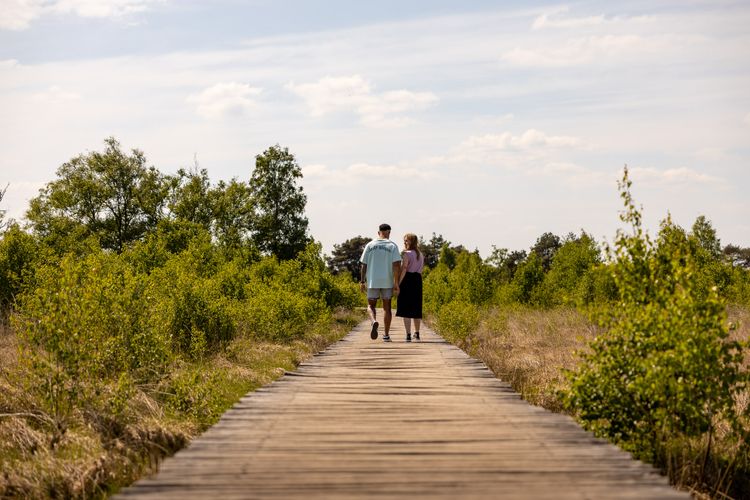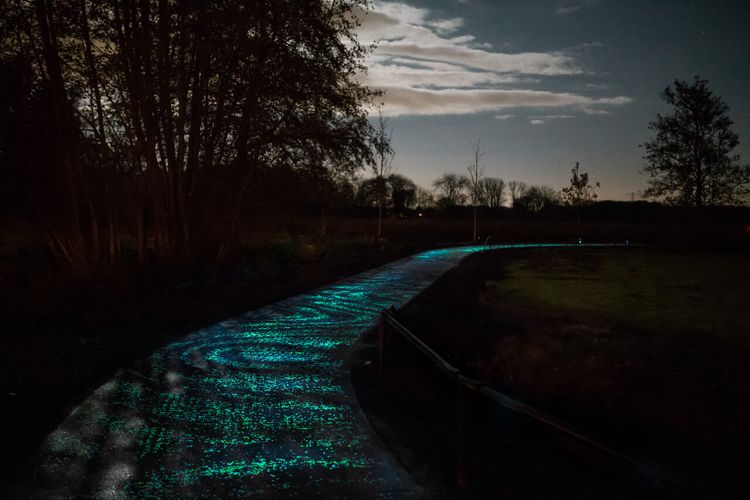Waalwijk Leather Route | Made in Brabant
Learn about leather and cycle 30 kilometres through the past and present of the leather and shoe industry in Waalwijk.
Starting point: from your location
Show all 9 photos
On this 30-kilometre cycle route, you discover all kinds of things about the leather and shoe industry in the municipality of Waalwijk. Depart from the bustling centre of Waalwijk towards Sprang-Capelle and Waspik and then cycle back over the Halve Zolenpad. Various audio fragments enable you to experience what you see on the way. They tell you more about the rich history of De Langstraat, the entrepreneurship and innovative strength of the past and present. Craftsmanship is central on this Made in Brabant route. That is something that still today makes Waalwijk and the surrounding area a global player of stature.
Visit De Langstraat
At the start of the 19th century, De Langstraat region grew int…
On this 30-kilometre cycle route, you discover all kinds of things about the leather and shoe industry in the municipality of Waalwijk. Depart from the bustling centre of Waalwijk towards Sprang-Capelle and Waspik and then cycle back over the Halve Zolenpad. Various audio fragments enable you to experience what you see on the way. They tell you more about the rich history of De Langstraat, the entrepreneurship and innovative strength of the past and present. Craftsmanship is central on this Made in Brabant route. That is something that still today makes Waalwijk and the surrounding area a global player of stature.
Visit De Langstraat
At the start of the 19th century, De Langstraat region grew into the centre of the shoe and leather industry. This route partly goes over the Halve Zolenpad, a lovely cycle path over the former freight railway between Lage Zwaluwe and ’s-Hertogenbosch. You cycle past old shoe factories, former tanneries, workers’ cottages and other souvenirs from the rich shoemaking history. And there is plenty more to do in this versatile region. On www.bezoekdelangstraat.nl, you can find fun outings, more lovely walking and cycling routes, nature areas, galleries and hospitality venues.
About this route
This cycle route was created by VisitBrabant Routebureau. The route was laid out via the North Brabant bicycle junction system. Simply cycle from one numbered junction to the next. Arrows show you the way between the junctions. If you encounter a problem with the route’s signposting, please report this to us via visitbrabant.com/meldpunt. You can also call 0800-4050050 (free of charge).
Made in Brabant routes
Brabant: the creative engine of the Netherlands. No less than 24% of the Dutch manufacturing industry production is still made in Brabant. Old crafts, industrial heritage but also innovative companies can be found in many places in the province, each with their own exceptional story. From old crafts such as tanning leather to brewing beer to the large multinationals and smaller creative businesses: Brabant has them all. We combine beautiful countryside with (old) industries and characteristic Brabant cycling and walking routes.
-
Signposting
Simply follow the signs and cycle along the route from one numbered junction to the next.
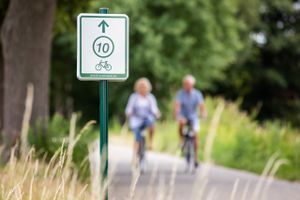
Signposting
Simply follow the signs and cycle along the route from one numbered junction to the next.

-
Hotline routes
Hotline routesIf there is something wrong on the route, report it here.
Sights on this route
The Shoe Quarter
This museum in the centre of Waalwijk connects the rich history of the leather and shoe industry with the future.
Starting point:
Raadhuisplein 15141 KG Waalwijk
Navigate to starting point

Audio fragment: from stinking skins to Van Haren
This audio fragment is part of the Waalwijk Leather Route.
Starting point:
WinterdijkWaalwijk
Audio fragment: from stinking skins to Van Haren
Grandad: Look around you, Sanne, and take a good at the surroundings. Did you know that the shoe and leather industry goes back centuries? It appeared destined for this area.
Sanne: Really? Why’s that?
Grandad: Well, imagine, I think it was around 1600. Large families lived on the farms but there was hardly anything to eat. People grabbed any opportunity to earn a bit extra and leather tanning was highly suitable for this region.
Sanne: Sounds like a tough time, Grandad. And that tanning, tell me about it.
Grandad: Well, that’s due to the countryside here. It was actually only suitable for cattle, but the seepage water, the flowing rivers and the oak trees created the perfect conditions to tan leather. At the time, tons of hides and water were left to rot for a long time, they were then scraped clean and rinsed, and thrown into tanning pits together with the oak. After years of stinking, the skins came out flexible and soft and they were hung up in the drying loft.
Sanne: Clever, but absolutely disgusting!
Grandad: Ha ha indeed, but they didn’t really pay much attention to that dirty water in those days. They had no choice! In a bit, we will go past some of the farms that used to have such a drying loft. You can recognise them from the black horizontal shutters.
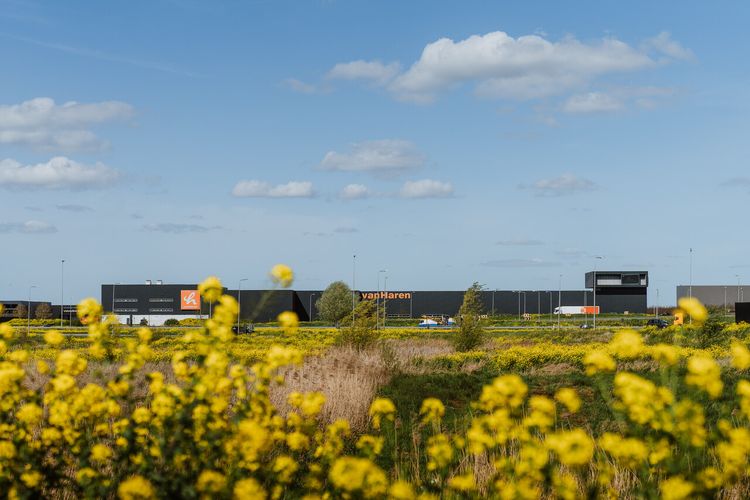
Audio fragment: from stinking skins to Van Haren
This audio fragment is part of the Waalwijk Leather Route.

vanHaren shoes head office
Ivo van Haren started making shoes in Waalwijk in 1929. Now, over 95 years later, vanHaren is one of the largest shoe retailers in the Netherlands.
Starting point:
Van Liemptstraat 105145 RB Waalwijk
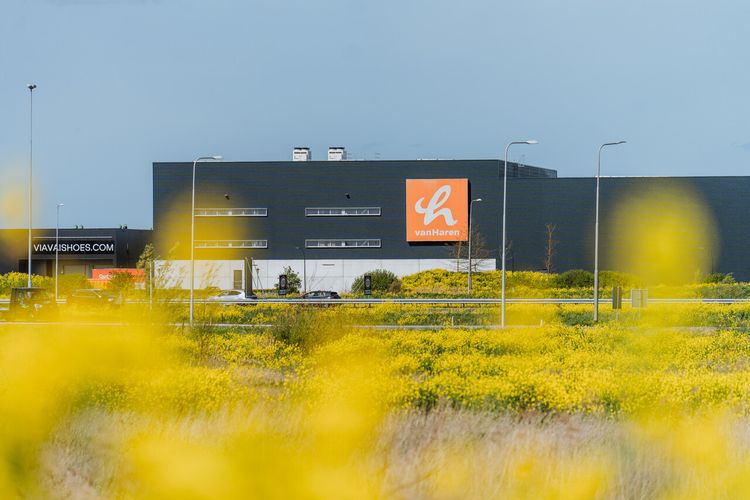
Tanning shed
The building that is now in use as a residential home used to be a tanning shed.
Starting point:
Hoofdstraat 705161 PG Sprang-Capelle
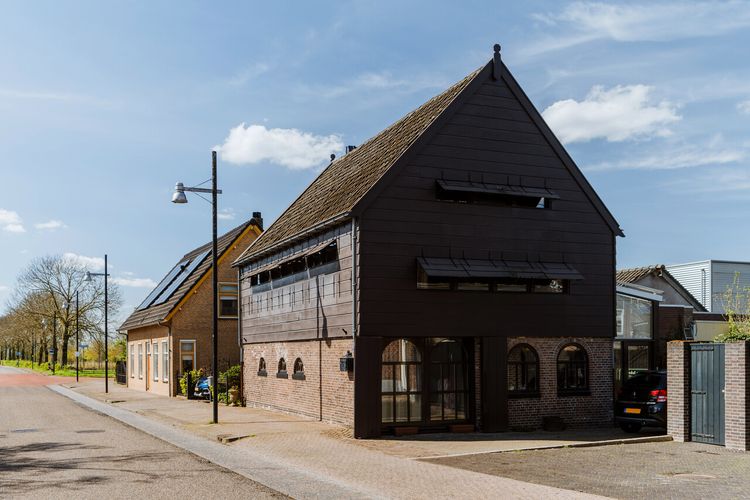
Former cottage industry house
When famers worked on commission for a business or client from home, it was called cottage industry.
Starting point:
Schansstraat 374944 AG Raamsdonk
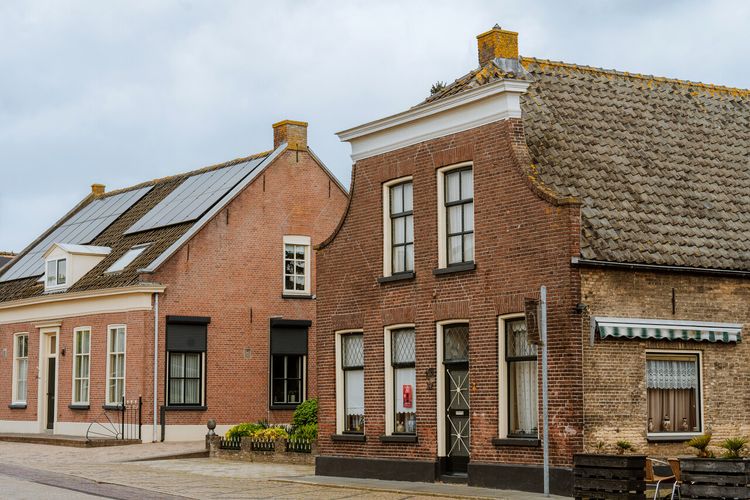
Audio fragment: From handwork to steam power
This audio fragment is part of the Waalwijk Leather Route.
Starting point:
Halve ZolenpadWaspik
Audio fragment: From handwork to steam power
Grandad: It was around 1800 when the peasant poverty was really over. The entire household helped make shoes in those days, so they could produce and earn more.
Sanne: The entire household? The children as well?
Grandad: Yes, everyone. The children as well, but it was a different time. There were people earned some real money of course. Not the homeworkers, but the ‘patrons’ or bosses who took the orders for lots of shoes and sent them out to the various homeworkers. You can still see some of the riches of that time in the cornice and bell gables of houses.
Sanne: So, it was real handwork from home and with the whole family? You can hardly imagine that nowadays. When did the factories start up?
Grandad: Much later, but when my father worked in the factory, we still weren’t well off... they were uncertain times. Wages were low, and it was a case of making do with what you had. The first shoe factory was established in Waalwijk in around 1896. That was the first step towards steam machines. And you know, a railway was even constructed to transport the large quantities of leather, shoes and the workers. The steam train ran from Van Geertruidenberg up to ‘s-Hertogenbosch: the Halvezolenlijntje.
Sanne: A train here? Where?
Grandad: Well… right here, where we are standing now. All the way from that side between the two whole shoe soles onto Waalwijk and over the bridge there. Railway guards operated every level crossing by hand. You can still see their houses along the track.
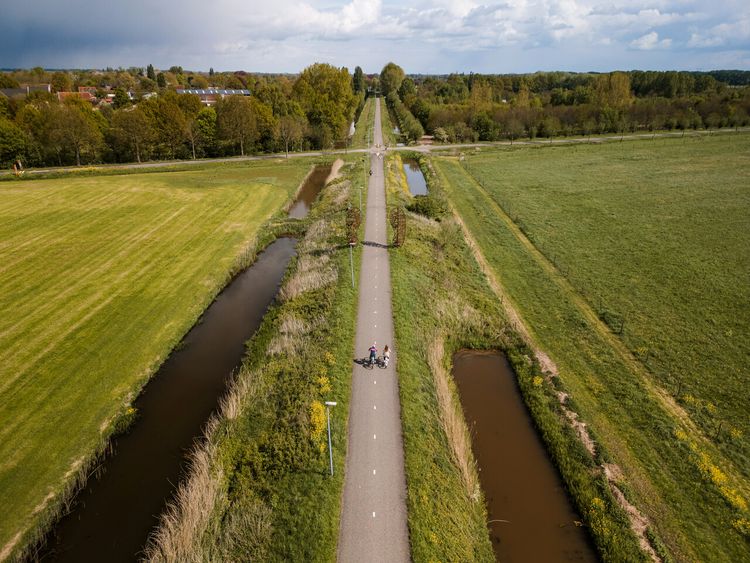
Audio fragment: From handwork to steam power
This audio fragment is part of the Waalwijk Leather Route.

Halve Zolenpad Footprint
On the former railway track, the Halve Zolenpad, you can find the 'Footprint' artwork.
Starting point:
Wielstraat 14944 Raamsdonk
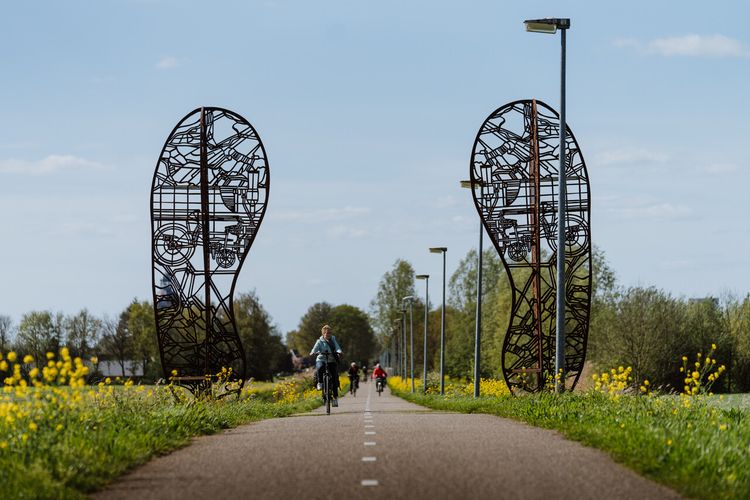
Old guard post
Along the Halve Zolenpad, there were no fewer than 41 guard posts on the crossings between the track and the road.
Starting point:
Sprangseweg 15144NV Waalwijk
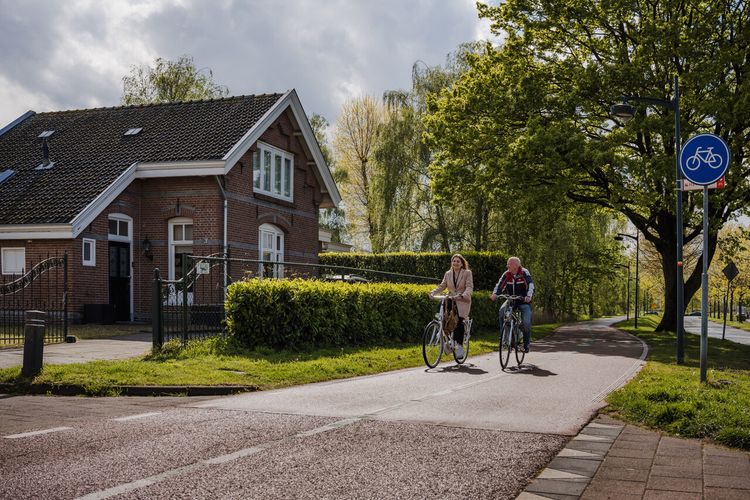
Greve store, Waalwijk
Hermanus Greve started a shoemaker in the heart of Langstraat, in the city of Waalwijk, in 1898.
Starting point:
Zanddonkweg 15144 NX Waalwijk
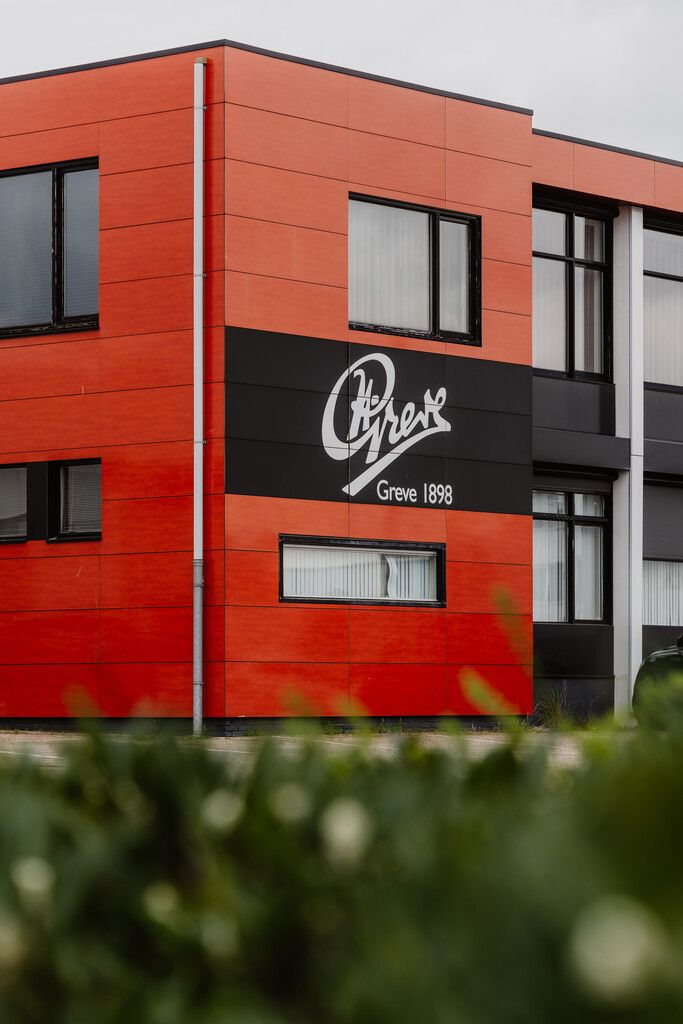
Statue of ‘Mother and Child’
You wouldn’t think so, but Waalwijk station once stood right on this spot.
Starting point:
Burgemeester van de Klokkenlaan 495141 EG Waalwijk
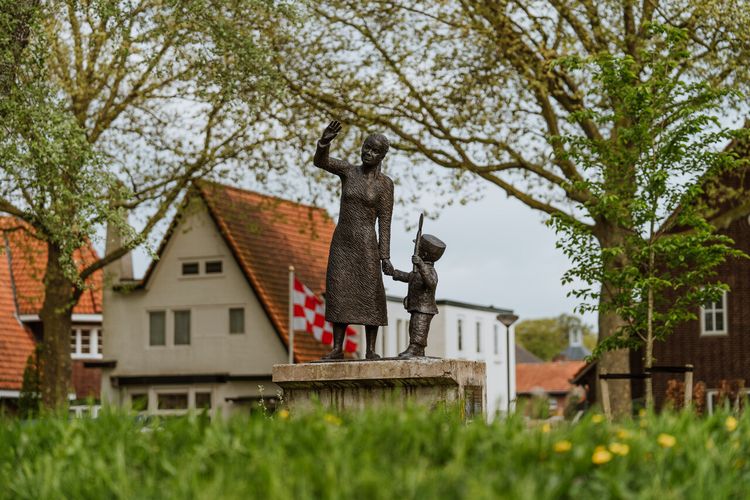
Statue of ‘Mother and Child’
Statue of ‘Mother and Child’
Burgemeester van de Klokkenlaan 49
5141 EG Waalwijk
Koninklijke Stoomschoenenfabriek A.H. van Schijndel
This factory, the A.H. van Schijndel Royal Steam Shoe Factory, expanded in 1906, and it was given the ‘Royal’ predicate in 1909.
Starting point:
Stationsstraat 1155141 GD Waalwijk

Koninklijke Stoomschoenenfabriek A.H. van Schijndel
Koninklijke Stoomschoenenfabriek A.H. van Schijndel
Stationsstraat 115
5141 GD Waalwijk
Former vanHaren shoe factory
Ivo van Haren started making shoes in Waalwijk in 1929. Now, over 95 years later, vanHaren is one of the largest shoe retailers in the Netherlands.
Starting point:
Hoogeinde 375142 GB Waalwijk

Statue of ‘The Shoemaker’
There is a statue of a shoemaker on Aan de Loeffstraat 107.
Starting point:
Loeffstraat 1075142 EP Waalwijk

Audio fragment: From necessity to pride
This audio fragment is part of the Waalwijk Leather Route.
Starting point:
HoogeindeWaalwijk
Audio fragment: From necessity to pride
Grandad: In the 1960s, the demand for cheap labour grew. Migrant workers from Southern Europe, former Yugoslavia, Turkey and Morocco were brought to the Netherlands specially. We were extremely happy with their help in the tanneries and a multicultural society emerged in Waalwijk.
Sanne: Aha. You do still see many different people for such a small city as Waalwijk. That must have taken some getting used to for both the people here as well as for them, I should imagine.
Grandad: Absolutely, but it was a wonderful time! Although, many people did this work out of necessity, we do look back on it fondly. That leather is part of who we are. I learned the profession from my father, and he learned from his father. My Grandfather always used to joke, ‘Shoemaker, stick to your last’. I am proud of our past and look towards the future… to you. Do you know what you want to do?
Sanne: I’ve got plenty of ideas for my assignment now. But the future…? Well, I think it would be great to design shoes but then sustainable ones. Also, for the workers. Then will we able to enjoy them for a long time. Thank you, Grandad.
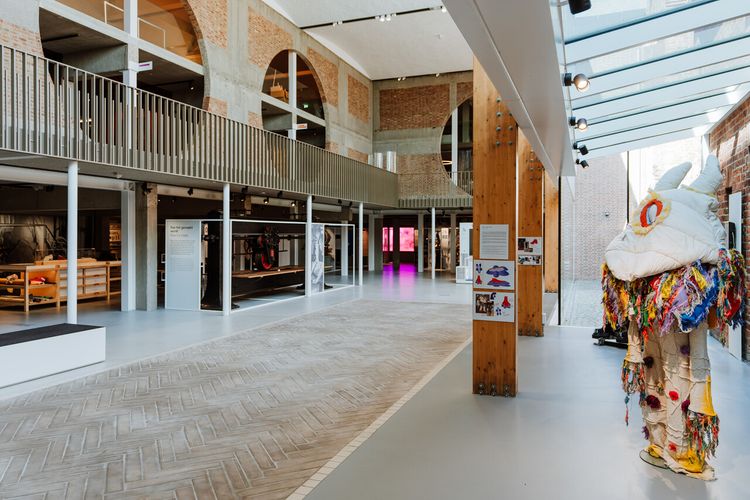
Audio fragment: From necessity to pride
This audio fragment is part of the Waalwijk Leather Route.

NUBIKK
NUBIKK is a young shoe brand from the Netherlands that has put itself on the map in a brief time.
Starting point:
Raadhuisplein 2A5141 KG Waalwijk

The Shoe Quarter
This museum in the centre of Waalwijk connects the rich history of the leather and shoe industry with the future.
Starting point:
Raadhuisplein 15141 KG Waalwijk
Navigate to endpoint

Story of the route
The Shoe Quarter
This museum in the centre of Waalwijk connects the rich history of the leather and shoe industry with the future.
Starting point:
Raadhuisplein 15141 KG Waalwijk
Navigate to starting point

After a weekend working, Sanne Schoenmakers, aged 21, cycled back to school on Monday morning. She only had to do her final assignment, and she would have completed her last year, but what was she going to do the assignment on? It had to be about innovation. At home, she looked for inspiration for a theme that suited her. In the attic of her parental home, she found a book she had not seen before: ‘Shoemaker, stick to your last’. Sanne laughed aloud as she spoke the words. ‘This is perfect, it can’t be a coincidence.’ Opening the book, she recognised her grandad’s writing. She knew he used to work in a shoe factory, everyone did at the time. However, the book went even further back, his father and even his grandfather worked with leather and shoes. So, it appeared to be in her blood, this had to be it. Sanne put the book in her bag, jumped on her bike and cycled to her grandad. Maybe he could tell her about the innovation in the shoe and leather industry.
When she stepped inside the kitchen door, she heard Grandad calling from the garden. He stood there holding his bike in his hand, ready to go for a bike ride. If she joined him, he could not only tell her something about it, but also show it to her. They departed from Waalwijk and soon cycled through the countryside. ‘The countryside that with its clear water and oak bark was at the cradle of the leather industry in De Langstraat,’ Grandad explained. He went on to tell Sanne that money was tight, they lived in uncertain times. One factory after the other closed its doors and wages were low. It was a case of making do with what they had.
It once stared with tanning pitson everyone’s farmyard and lead to many shoemakers and even to large steam shoe factories. Eventually, one in three Waalwijk residents worked in the shoe industry. That industry became so big that a railway was constructed, known as the 'Halvezolenlijntje' (Half Sole Line), to transport the vast amounts of leather, shoes and the workers. ‘The plan was first to construct one track and then the other half,’ Grandad explained. The industry has clearly left its mark in the form of guard houses, factory buildings and cycle paths, but even nowadays, you still also see the creative and innovative strength in the people of De Langstraat.
The Shoe Quarter
This museum in the centre of Waalwijk connects the rich history of the leather and shoe industry with the future.
Starting point:
Raadhuisplein 15141 KG Waalwijk
Navigate to endpoint

- 08
- 18
- 11
- 36
- 75
- 46
- 12
- 13
- 16
- 45
- 17
- 01
- 44
- 44b
- 15
- 10



